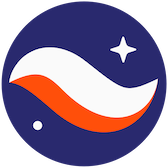Can Polygon's bet on ZK Rollup win the L2 war dominated by OP?
Written by: Lucius Fang
Compiled by: Shenchao TechFlow
Optimistic Rollup (ORU) is currently winning the L2 war
As the modular narrative led by Celestia advances, the competition among Ethereum L2s is becoming fierce, with new chain launches announced almost every month, as using Celestia as a data availability (DA) layer can significantly reduce transaction costs.
Many projects are considering whether to launch their own L2, as this could help reposition themselves as a chain that may achieve a higher fully diluted valuation (FDV) in a bull market. Some DeFi projects were among the earliest to hop on this fast train, aiming to internalize maximum extractable value (MEV) while lowering transaction costs. These include Aevo (derived from Ribbon Finance), Lyra Finance, and Frax Finance's Fraxtal. Notably, all of the aforementioned projects have chosen Optimistic Rollups (ORU), specifically OP Labs' OP Stack as their chain, rather than ZK Rollup.
Even in new chains like Coinbase's Base, Blur's Blast, and Bybit's Mantle, the trend favoring ORU continues. Besides the ORU giant OP Stacks, Arbitrum has also gained attention by incorporating Xai and ApeCoin into its Arbitrum Orbit ecosystem. From the TVL of Arbitrum and Optimism mainnets, the dominance of ORU is evident, capturing 75% of the market share of all other Rollups.
Does this mean ZK Rollup will never catch up?
ZK Rollup (ZKR)
As a recap, Rollup is an Ethereum L2 solution that bundles multiple transactions outside the Ethereum mainnet and submits them as a single transaction to Ethereum, helping to lower transaction costs while inheriting Ethereum's security. There are two main types of Rollup: ZK Rollups (ZKR) and Optimistic Rollups (ORU), which use validity proofs and fraud proofs, respectively.
The comparison between ZKR and ORU is as follows:
The pros and cons of ZKR relative to ORU are as follows:
Advantages
Transactions can be completed almost instantly using validity proofs, rather than through ORU, which requires a 7-day challenge period for fraud prevention. This results in shorter fund withdrawal periods.
Only transactions necessary to compute state differences must be settled on Ethereum, compared to all transactions in ORU.
Disadvantages
Requires more computational resources and specialized hardware to generate validity proofs.
Less suitable for EVM, thus migrating existing EVM-based projects requires extra effort, while ORU is EVM equivalent.
Essentially, ORU is easier to build, with the advantage of facilitating the migration of existing EVM-based projects. The main limitation is that transaction finality requires a 7-day challenge period, affecting fund withdrawals from L2. This is why many believe ZKR is a better solution for Ethereum scaling, as it offers instant transaction finality with validity proofs, also known as zero-knowledge proofs (ZKP). However, ZKP is still a relatively emerging technology, and research is ongoing on how to optimize ZKP production and make ZKR more EVM-friendly.
Types of ZK-Rollup (ZKR)
ZKRs are typically classified into four types of zkEVM, which balance EVM equivalence and proof requirements. zkEVM refers to a virtual machine that is both EVM compatible and supports ZKP.

Four types of zkEVM
The design of EVM is not compatible with ZKP, making it lengthy and costly for ZKP to prove all parts of Ethereum transactions. To achieve faster and cheaper proofs, the solution is to create a custom virtual machine (VM) optimized for ZKP and then create a compiler to translate EVM languages.
In short, projects must decide between optimizing the portability of existing EVM-based applications or transaction costs.
Type 1: Fully equivalent to Ethereum, capable of scaling Ethereum L1, but with extremely long proof times.
Type 2: Complete EVM equivalence, existing EVM-based applications can migrate without modification, but with long proof times.
Type 3: Nearly EVM equivalent, existing EVM-based applications can migrate with some modifications, but with fast proof times.
Type 4: High-level language equivalent, requiring a compiler to convert EVM languages into a custom zk-friendly VM, but with super fast proof times.
Type 1 ZKR is the hardest to produce but has the greatest potential to scale Ethereum itself. Due to its complexity, it may take years to become operational. Therefore, currently operational ZKR mainly consists of Type 3 (Polygon zkEVM and Scroll) and Type 4 (Starknet and zkSync Era). It is worth mentioning that projects in Type 3 hope to become Type 2, so for them, this is more of a transitional period to become more EVM compatible.
Due to the technical difficulties in launching production-ready ZKR, ORU gained a first-mover advantage with the launch of Arbitrum and Optimism mainnets in 2021. Meanwhile, zkSync 2.0 and Polygon zkEVM were launched in 2023. This has given ORU a significant lead and the ability to attract capital and projects. The launch of ARB and OP tokens has also helped retain users through ongoing liquidity staking projects and funding.
However, the trend may reverse in the coming months.
Polygon: The Aggregation Layer for ZKR
Among all ZKRs, Polygon may have the most potential to replace ORU. Let's take a look at what advantages they have.
Strong ZK Foundation
The Polygon team gained attention in the past cycle (2021-2022) mainly through business collaborations with traditional companies such as Nike, Starbucks, Mastercard, Adobe, Disney, Adidas, and Mercedes. What is often overlooked is Polygon's strong emphasis on ZK technology, which includes the acquisition of Hermez ($250 million) and Mir ($400 million) in 2021.
Hermez contributed to the current version of Polygon zkEVM, providing high EVM compatibility and aiming to become a Type 2 zkEVM. Mir later became Polygon Zero, dedicated to improving ZK proofs.
Polygon has been releasing various groundbreaking research results in ZK, the most recent being Circle STARK, a fast proof system developed in collaboration with Starkware. The white paper was released on February 22, 2024, and Circle STARK will be integrated into the Plonky3 proof system, expected to improve by ten times compared to Polygon's current Plonky2 proof system.
Eli Ben-Sasson, co-founder of StarkWare, stated in an interview with CoinDesk: "I think this will bring the most efficient proof system for a while."
Multi-pronged Marketing Strategy
With the rise of the modular narrative, the choice of data availability (DA) solutions has become an important differentiating factor. Hosting DA off-chain will result in cheaper transactions and higher throughput but sacrifices security. Polygon has not chosen a specific arrangement but has decided to use three strategies.
1. Polygon PoS will transition to zkEVM Validium
EVM equivalent
Transaction data available off-chain (Validium)
Suitable for high-frequency and low-value transactions, such as gaming and social projects.
2. Polygon Miden, based on STARK
Miden VM optimizes ZK, supporting Rust and Typescript
Provides non-EVM features such as native account abstraction (AA), allowing users to control the information they want to keep confidential
Suitable for new types of applications, such as order book exchanges
3. Polygon zkEVM
EVM equivalent
Uses Ethereum's DA
The safest and most expensive variant, suitable for low-frequency high-value transactions like DeFi.
At first glance, Polygon's strategy may seem scattered, lacking a specific focus. However, with the rise of ZK technology, betting on all potential possibilities may prove to be the right strategy. Regardless of how ZK technology ultimately enters Ethereum, Polygon will be involved.
As Rollup introduces isolated states and liquidity, Polygon introduces a solution through the Aggregation Layer (AggLayer). The Aggregation Layer provides unified liquidity and shared state for ZKR. It achieves this by aggregating proofs from multiple ZKR and then creating an aggregated proof that will be settled on Ethereum. This enables cross-chain atomic transactions between ZKR. For example, users on OKX's X1 chain can directly purchase NFTs from Immutable zkEVM. Polygon has also released a Type 1 Prover, allowing any EVM chain to connect with AggLayer.

Polygon Chain Development Kit (CDK)
As mentioned at the beginning, applications are considering becoming an application chain themselves, with the current leaders being OP Stacks, followed by Arbitrum Orbit. Polygon CDK is Polygon's answer for creating custom zkEVM chains for applications. So far, Polygon has demonstrated its BD strength not only in traditional companies but also in the web3 space. Notable products include Immutable, OKX's X1, Astar, and Manta Network.
Securing support from Immutable is one of Polygon's biggest victories, as Immutable is currently the highest-valued gaming blockchain, with a valuation of about $7 billion. Manta Network, the third-largest L2 by TVL, has also decided to switch from OP Stack to Polygon CDK. As one of the top five centralized exchanges, OKX's choice of Polygon CDK to launch its L2 also proves Polygon's ZK technology.
Another interesting development is that two well-known Bitcoin Layer 2 projects have decided to use Polygon CDK. Both received significant staking deposits upon their mainnet launch due to anticipated airdrops. Merlin Chain has about $3.8 billion in deposits, while B² Network has about $660 million. Although there is still fierce debate in the market about what constitutes a true Bitcoin L2, seeing the adoption of Polygon CDK outside the Ethereum ecosystem is still impressive.
Strong Token Value Accumulation
The current question is how all these innovations will bring value to Polygon's native token. Using a script similar to the renaming of Matic (MATIC) to Polygon (MATIC) in 2021, the token is now being renamed to Polygon Ecosystem Token (POL), with a 1:1 migration and a new price chart. A successful migration will help re-attract attention to the project and assist in price discovery. A recent successful example is the renaming of Merit Circle to Beam.
After the token renaming, POL's positioning is strengthened, becoming the staking token for AggLayer and Polygon CDK chain sequencers. Validators need to stake POL to start validating the network, generating ZKP, and participating in the Data Availability Committee (DAC) in exchange for protocol rewards and transaction fees.
POL has already been minted on the Ethereum mainnet, but staking functionality has not yet been enabled, and there is no immediate deadline for converting MATIC to POL. Polygon may be preparing for a large-scale migration event while launching the mainnet for Polygon CDK chains.

Among all ZK Rollups, POL/MATIC is the only token that no longer has an aggressive unlocking plan, with the last unlocking occurring on February 22, 2024. Nevertheless, POL has a new token economic model, with a future annual inflation rate of up to 2%, half of which will be used for community funds and the other half for validator rewards. This is significantly less supply shock than other L2 tokens like ARB, OP, and STRK.
Finally, Polygon has named its DA solution Avail. Given Celestia's high valuation, it is reasonable to speculate that Avail may debut at a similar valuation range and potentially airdrop its native token to the Polygon ecosystem. Although many existing Polygon CDK chains already have their own tokens, it is reasonable to speculate that future Polygon CDK projects may also choose to airdrop their tokens to POL stakers. If so, POL will be able to have the narrative of "staking for airdrops," significantly increasing its value. Especially since Celestia and Dymension have already benefited greatly from the same narrative.
Notable ZKR


Starknet
Starkware was once hailed as the leader in the ZKR space, attracting projects like dYdX, ImmutableX, and Sorare to launch its StarkEx chain. StarkEx is an Ethereum Layer 2 that supports specific types of Ethereum transactions, such as trading and NFT minting.
They took a long time to launch their general-purpose ZKR, known as Starknet, leading some key projects like dYdX and Immutable to migrate to other ecosystems like Cosmos and Polygon. Additionally, as a Type 4 ZKR, they decided not to be compatible with standard Ethereum wallets like MetaMask, which may have created many frictional barriers for user onboarding. This was evident on Starknet before the STRK launch on February 20, 2024, with a total locked value (TVL) of only about $50 million and daily active users (DAU) of less than 200,000, both lagging behind zkSync Era and Linea. However, now, due to STRK's high valuation and its new DeFi activities, its TVL and DAU are on par with zkSync Era.
Starknet recently distributed its initial STRK tokens, which sparked discontent within the community due to strict airdrop requirements aimed at curbing "airdrop witch attacks." Tensions escalated when a core team member of Starknet referred to these users as electronic beggars. The situation became even more severe when users realized that the STRK unlocking plan began in 2022 rather than the initial allocation in February 2024, effectively reducing the lock-up period for the team and investors to just two months. In response to this backlash, the team has adjusted the token unlocking amounts to make it more gradual.
Starknet has its own L2 SDK and plans to introduce L3 (application chains). However, so far, no notable announcements have been made publicly, with only Paradex (an order book perpetual protocol) having launched.
zkSync Era
As a Type 4 ZKR, zkSync Era ranks second among all ZKRs in TVL, reaching $185 million, and has the highest daily active users, reaching 237,000. However, high usage may be due to expectations of its native token airdrop. Compared to Starknet, users find it easier to use zkSync Era, as it is compatible with standard EVM wallets like MetaMask. The team also emphasizes that projects can deploy on zkSync Era using popular EVM languages (like Solidity, Vyper, and Yul) along with its LLVM-based compiler.
In their roadmap, they plan to introduce zkPorter, an off-chain DA solution to improve transaction throughput. zkSync Era also has its own L2 SDK called Hyperchain, with upcoming products including Crypto.com's Cronos zkEVM, GRVT (a hybrid cryptocurrency exchange), and Tradable (private credit).
Linea
Developed by Consensys, Linea is the default Ethereum L2 network on MetaMask. As the largest web3 wallet in the space, its native integration with MetaMask significantly increases its user base. Frequent activities on Galxe also help boost its on-chain statistics in anticipation of airdrops.
Linea has not announced any public plans regarding L2 SDK or L3.
Scroll
Scroll is developed in collaboration with the Ethereum Foundation's Privacy and Scalability Exploration (PSE) group, focusing on zkEVM research. Like the other projects mentioned, its usage is high due to airdrop expectations.
Scroll has not announced any public plans regarding L2 SDK or L3.
Taiko
Taiko is the first project outside the Ethereum Foundation specifically designed to be a Type 1 zkEVM. It also refers to itself as based on Rollup, where the role of sequencer is directly undertaken by Ethereum L1 validators, giving it decentralized sequencers from day one.
Currently, it is still in the testnet phase, with the mainnet expected to launch in the first half of 2024. Taiko has not announced any public plans regarding L2 SDK or L3.
Competitive Landscape

Currently, zkSync Era, Starknet, and Linea stand out among all other ZKRs with the highest TVL and DAU, but this situation may quickly change when Polygon PoS upgrades to zkEVM Validium in the first half of 2024, absorbing its existing $1.1 billion TVL and 1 million DAU.
The upcoming catalysts for Polygon zkEVM revolve around its diverse project lineup, which will compete across various subfields. For example, in the L2 space for centralized exchanges (CEX), OKX's X1 will compete with Coinbase's Base and Bybit's Mantle, both using ORU. In the gaming L2 space, the currently highest-valued gaming chain Immutable will compete with Xai from Arbitrum Orbit and Redstone from OPStack. Last but not least, in the general L2 space, Manta Network has accumulated the third-largest TVL ($650 million) among L2 solutions. These projects collectively contribute to a strong Polygon ecosystem, ultimately bringing value back to the POL token.
Final Thoughts
From a technical advantage perspective, ZKR is more secure, efficient, and economical than ORU. However, ORU can still choose to use hybrid proof systems to achieve validity proofs. Whether ZKR's delay in launch and choice of better technology is the right strategic choice remains to be seen. Polygon is a rare case, as it began attracting a large user base due to its early involvement with Ethereum as its sidechain, and now, once ready, it can guide these users into its ZKR ecosystem.
The key to L2 winning adoption is having exclusive applications within its ecosystem. Arbitrum currently leads in the DeFi sector, with GMX, Hyperliquid, and various perpetual DEXs launching there. Optimism has also gained significant adoption, with Frax launching Fraxtal and Synthetix on the Optimism mainnet. In gaming, Arbitrum also leads with Xai, ApeCoin, and TreasureDAO. Social applications also first appeared on ORU, with FriendTech on Base and Farcaster on Optimism.
Nevertheless, ZKR still holds promise, especially Polygon. Polygon zkEVM is about to launch the DeFi season. Additionally, several heavyweight Polygon CDK chains, such as OKX's X1, Immutable zkEVM, and Astar zkEVM, are set to launch their mainnets in the first half of 2024. Coupled with the transition of Polygon PoS to Polygon zkEVM Validium and the migration of POL, Polygon has many upcoming catalysts to regain market attention. Furthermore, most ZKR have yet to launch their tokens, so there remains ample opportunity for ZKR to stake their claims. Similar to the previous cycle, these ZKR may be able to raise significant ecosystem funds to help boost their usage.
Ultimately, one of Ethereum's ultimate goals is to upgrade L1 itself through zkEVM. Therefore, ZKR has great potential in pushing the boundaries of Ethereum's scalability. One of the best ways to achieve zkEVM is through Polygon, as it has strong business development capabilities, is at the forefront of ZK research, and plans to feed strong value accumulation back to POL.












